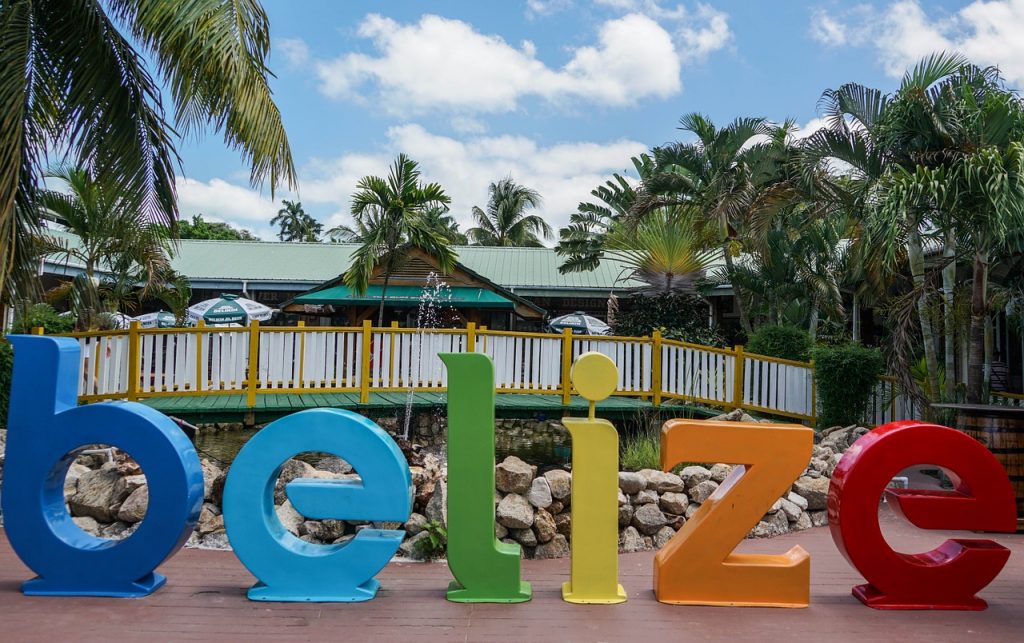
Placencia
Placencia is a gorgeous emerald peninsula in southern Belize with 16 miles of wide sandy beaches. The Caribbean Sea is to the East and the Placencia lagoon is to west looking towards the Maya Mountains on the mainland. Placencia is essentially divided into two parts: south and north of the airstrip. Placencia is home to approximately 3500 people, historically it was a fishing village mainly populated by the Garinagu people, the main communities on the peninsula are Seine Bight, Maya Beach, Riversdale and Placencia. Offshore are a myriad of cayes with spectacular diving, snorkeling, fishing, kayaking and island exploration trips that are minutes away from the peninsula.
Property in Placencia is still relatively reasonable and you can own a piece of beachfront for less than you can in San Pedro. One of the advantages of purchasing property on the peninsula is that you have road access to mainland Belize, the Maya ruins, the rain forest and a host of things to do like horseback riding, cave tubing, canoeing, bird watching, and hiking. Placencia has become a popular tourist location and with that has come great amenities such a fine dining experiences; some of the best restaurants in the country are found on the peninsula, fresh and exotic cuisine, local and international there are also great bars for a sunset drink or nightcap, spas, gift and specialty stores, and much more.
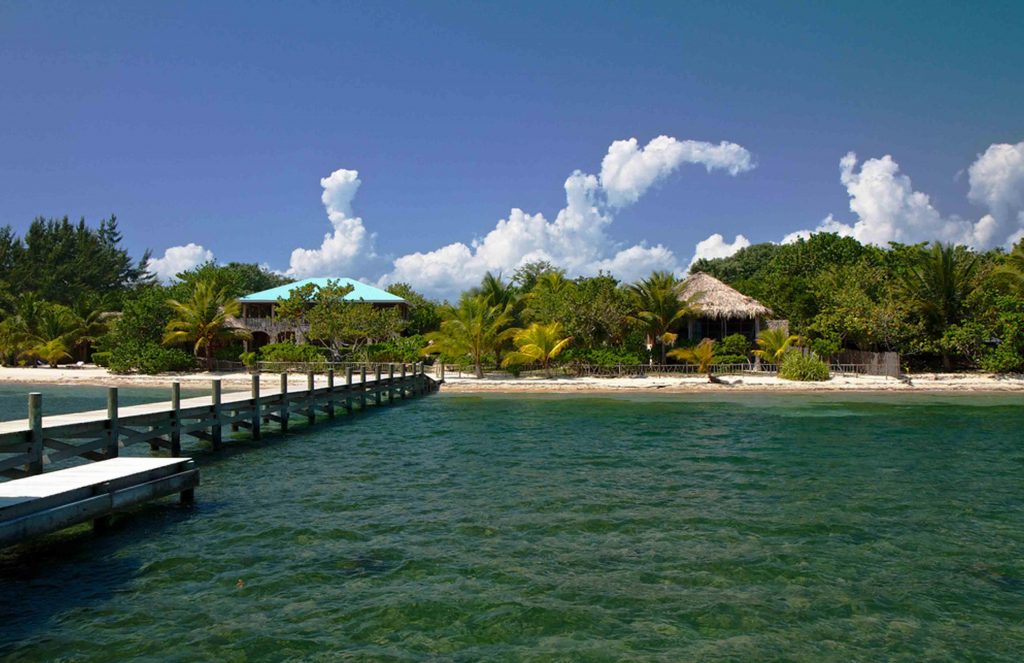
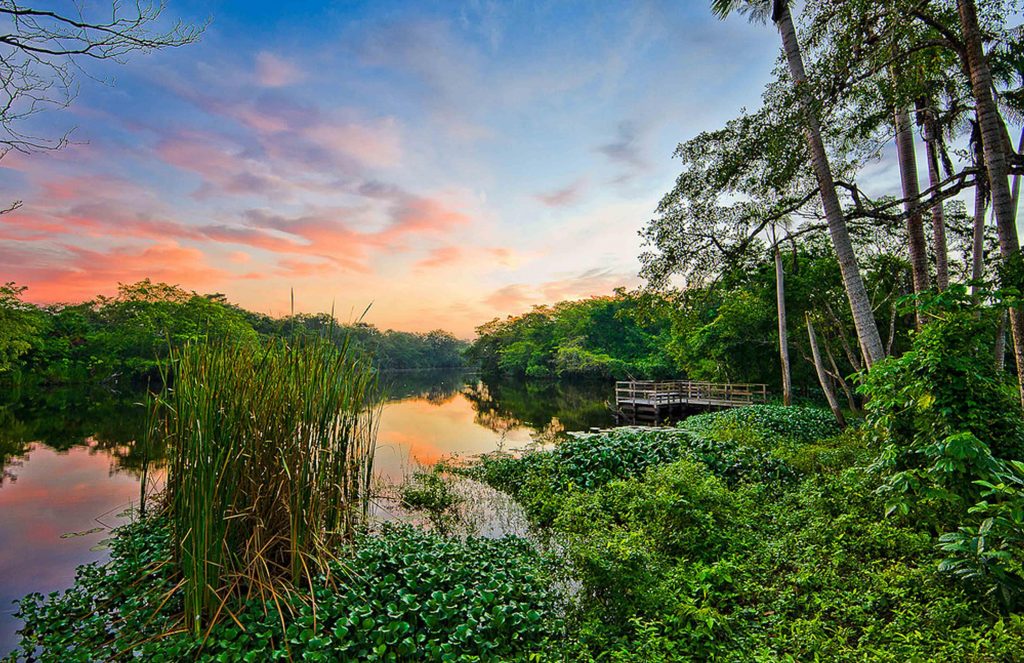
Orange Walk
Orange Walk District is Belize’s second largest district and its population is approximately 49,500 people. The district capital is Orange Walk Town and has a population of 16,000 people; other communities in Orange Walk District include August Pine Ridge, Carmelita, Indian Church, Guinea Grass, Trial Farm, Trinidad and the Mennonite communities of Blue Creek and Shipyard. There are also significant Maya sites including Cuello, Lamanai, Nol Mul and Chan Chich in the Orange Walk district that are big tourist attractions..
Orange Walk Town is centred around a formal plaza and the nearby town hall and other buildings in the town all showcase the towns distinctive Mexican heritage. Points of interest include the Banquitas House of Culture, a well-run museum and cultural, La Inmaculada Church a Spanish Colonial Church, and the Mayan Sites. The town contains several hotels and restaurants including El Gran Mestizo Hotel, Orchid Palm Inn, and Hotel De La Fuente. Chan Chich Lodge, Lamanai Outpost Lodge and the more rustic La Milpa Field Station provide relaxed, natural Orange Walk experiences. Hourly buses from Belize City and Corozal arrive on the main road in the centre of town, Orange Walk Town is an easy hour and a half drive from Belize City, so a rental car is a good option for those wishing to see this interesting area of Belize and explore its unique, friendly villages and Maya heritage. Property prices in Orange Walk Town are very reasonable you can own an acre of land for as little as $3,000 on the outskirts of the town.
San Pedro
Ambergris Caye is located in the Belize District, it is in the north of the country of Belize close to the Mexico border, separated from Mexico’s Yucatan peninsula by just a thin canal which was widened by the Mayan people hundreds of years ago. The island is a 25 mile long, flat, coral sand island made of porous limestone, protected on the East by a living reef that extends 185 miles down the coast of Belize with a lagoon on the west of the island. San Pedro Town is the only town on the island, located at a narrow point of the island. The island is home to approximately 17,000 people and of course tourism is the biggest money earner for the island.
The Island is a beautiful fifteen minute plane ride from the international airport or if you want to feel the sea breeze on your skin then you can opt for the 1 ¼ hour boat ride from the boat terminals in Belize City to the island. The beaches are white and sandy, the water countless shades of blue.The streets and beach are lined with bars, shops, dive shops, and restaurants. There is an array of things to do on and around the island, including world class diving, fishing, snorkeling, parasailing, jet skiing, or just simply relaxing on the beach and there are countless things to do at night also including fine dining, bars, dance clubs.
The island is a real estate investment gem; it is considered one of the best areas to invest in as property values have doubled in some case tripled and continue to increase every year. The development on the island is getting more sophisticated as is the level of service, investing in a property is easy and the lifestyle that will accompany your investment is one that will truly be priceless.

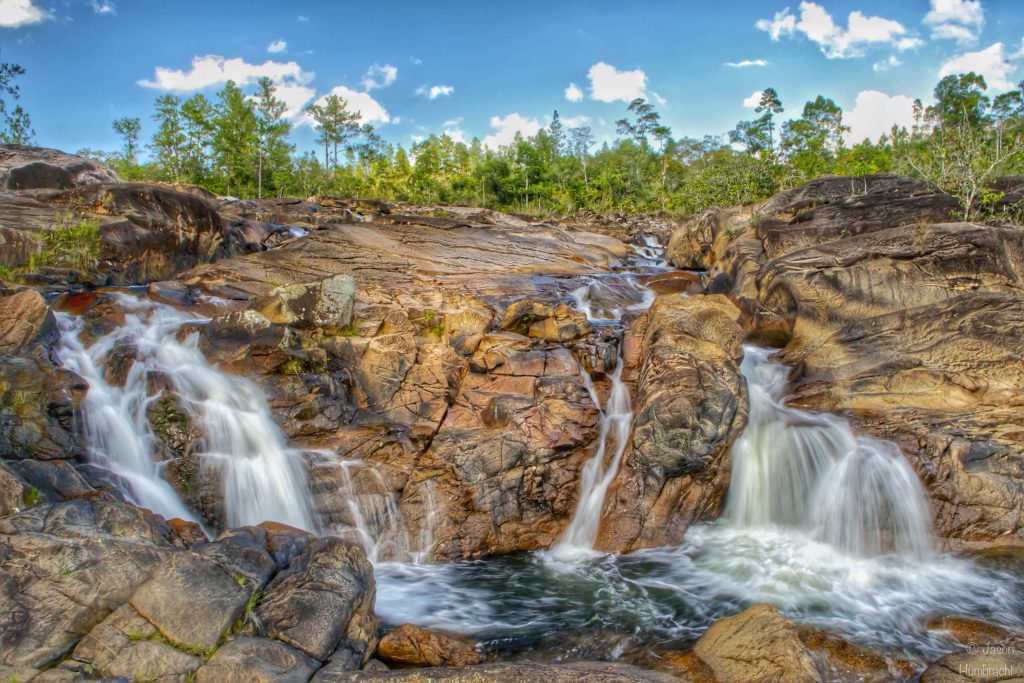
Cayo District
The Cayo District is about two thousand square miles of lush green landscape, it has some of the clearest, magnificent rivers, lush jungles, green hillsides, breathtaking waterfalls, huge cave systems, and home to two of the most astonishing and important Mayan ruins in the country; Xunantunich and Caracol. The capital of Belize which is Belmopan City is also in the Cayo District, the city of Belmopan is home to Belize’s government headquarters; Independence Plaza marks the center of Belmopan with the government administrative buildings and the Prime Minister's office. Banks, post office, the main immigration office, the
Western Regional Hospital, a number of embassies and the main campus for the University of Belize are all located in Belmopan City.
Ecotourism is an integral part of the economy of this area in Belize and that is evident in the many existing nature reserves including the Blue Hole and Guanacaste National Parks and also the National Pine Ridge Forest Reserve which is just waiting for you to explore its rich wildlife. Found nestled in a valley sculpted by the Macal and Mopan rivers are the sister
towns of San Ignacio and Santa Elena which combine to form one of Belize’s largest population center with over 22,000 people. San Ignacio is approximately 70 miles from Belize City, it is reached via the George Price Highway, which begins on the outskirts of Belize City and ends in town Benque Viejo del Carmen which is the border town to Guatemala. Some of the villages in the Cayo District include San Antonio, Valley of Peace, St. Margaret's, Roaring Creek, Armenia, San Jose Succotz, Arenal, Buena Vista, Calla Creek, Esperanza, Cristo Rey, Georgeville, Unitedville, Blackman Eddy, Ontario, Camalote, Los Tambos, More Tomorrow and Spanish Lookout the modern-day Mennonite settlement that has a thriving agriculture community. If you want to get a look at what may appear to be a neat town in mid America, you may want to make a short visit. The run into Spanish Lookout is but 15 minutes from the highway. Both English and Spanish are widely spoken in Cayo, which is home to large populations of Mestizos, Creoles, Chinese, Lebanese, Mennonites, Mayas and to a lesser degree Garifuna and East Indian.
Corozal
Corozal District is Belize’s northernmost district, sharing a border and commercial free zone with Mexico. It encompasses 718 sq mi (1859.611 sq km) and is home to some 48,000 people (2018). It is 88 miles North of Belize City, 31 miles North of Orange Walk Town, 9 miles south of the Mexican border and is located between two scenic rivers, The New River in the Orange Walk District and the Rio Hondo which forms a natural boundary with Mexico. The district capital, Corozal Town is set on a crystal-clear bay and it is home to a growing expatriate community, mostly concentrated in the northern tip of the town at Consejo Shores, and along the seaside in the Copper Bank and Chunox areas.
The sugar industry was the mainstay of the Corozal district for many years, and . while still important to the economy, varied agriculture and tourism are playing larger roles today. While not part of the traditional tourist circuit, Corozal Town makes a good base for fishing excursions in the calm bay; bird watching and wildlife viewing tours into nearby Shipstern Nature Reserve; shopping trips to neighboring Chetumal, Mexico; and explorations of the Mayan ruins including Santa Rita, Cerros and Lamanai which are a few that are located in the Corozal District.
The establishment of the Commercial Free Zone on the Belize – Mexican border with some 200 outlets has had a major impact and is now the main source of employment. The Corozal Free Zone operates as a minimal tax area providing casinos, hotels, shopping arcades and wholesale depots for many consumer items. Mexicans come across by the thousands every day to look for bargains that may be difficult to find in their country. However, even with the Corozal Free Zone business, the district and town are still laid back and easy going- especially the town with its quaint seaside feel. Indeed, if you go jogging along the road that winds around the Bay, don’t be surprised at the numerous greetings of “Good Morning” or “Buenos Dias” you’ll hear. Other villages in the Corozal District include Trial Farm, Libertad, Buena Vista, Calcutta, Caledonia, Carolina, Chan Chen, Chunox, Copper bank, Louisville, Paraiso, Patchakan, Yo Chen and Xaibe.
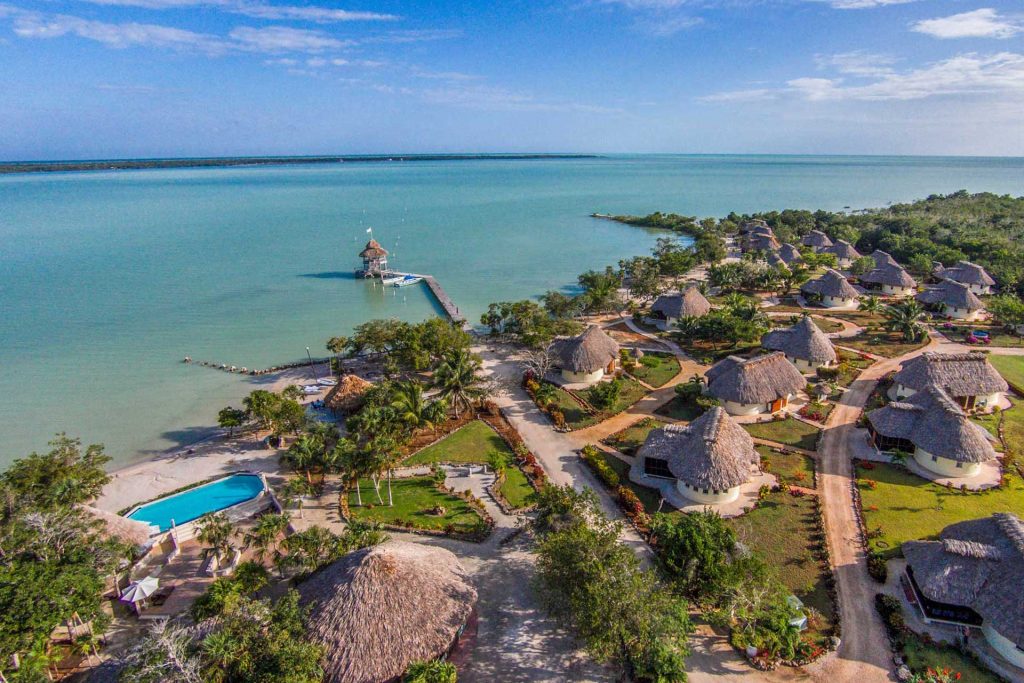
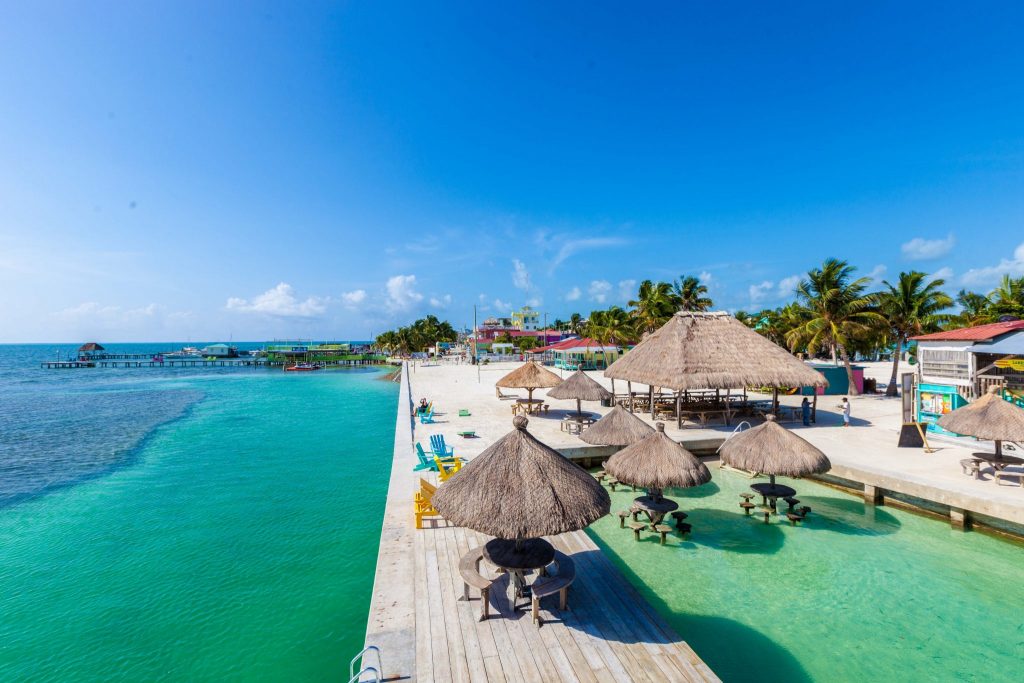
Caye Caulker
Caye Caulker is 21 miles northeast of Belize City and 11 miles south of Ambergris Caye and is protected by the Barrier Reef to the East. Caye Caulker is the second largest of the 200 plus small islands, and cayes dotting the coast of Belize; the island is about 4 miles long, but the town itself is only about a mile long. The island has been described as basically a huge sand bar over a limestone shelf, underwater caves are found in the limestone and a shallow lagoon sits in front of the village. Caye Caulker was primarily a fishing community; but its economy has become increasingly tourism-based. The demographics generally reflect that of northern Belize being mostly Mestizo but in recent years a small Creole community, mainly immigrants from Belize city has developed on the Island. Getting to Caye Caulker is easy, with regular water taxis, commuter planes and private boats servicing the island. Flights to Caye Caulker are available on Tropic and Maya Island Air to and from Belize Municipal and International Airports. Visitors on a budget can travel between Belize City and Caye Caulker by boat for US $10. one way. Most boats leave Belize City for Caye Caulker from the docks near the Swing Bridge in Belize City. Once on Caye Caulker, the easiest mode of transport is simply walking; barefoot is the preferred means of travel on Caye Caulker’s three streets – the front, back and middle streets-. The streets and paths are well defined, and crossing the island takes about 20 minutes or you can rent a golf cart for extra ease of shuttling between some 25 eateries and a couple dozen colourful shops. Caye Caulker is a popular destination for scuba divers, snorkelers, anglers, windsurfers and tourists who just want beach-oriented relaxation at budget prices. For expats who yearn to retire on an idyllic Caribbean island, Caye Caulker is a dream come true. This island is all about the Caribbean Sea, and its gorgeous natural setting. The cost of living on Caye Caulker is still quite reasonable for a popular Caribbean tourism island with less than 2,000 residents, Caye Caulker is still small. There’s room to move, with little to no traffic. Homes and condominiums on the beach are now priced similar to those on Ambergris Caye. For example, a two-bedroom, two-bath, 1000-square-foot condominium will likely go for $275,000. Less expensive options do come up at times for those who are willing to buy off beach, or further away from the village. Flying over Caye Caulker’s north island it’s clear that development is picking up. The north island is separated from the village and south island by the iconic split. The properties on the north island are still well priced. Lots both on the sea and one row from the sea can go for between $50,000 and $100,000. If you were to invest in this type of lot you could build your island dream home for $100 to $175 per square foot.
Belize City
The Belize District is centrally located between the northern and southern borders of the country and it is the heart of colonial Belize. The original British port settlement was in Belize City; it was the first capital of the colony of British Honduras. Its terrain is coastal swamp extending to savannah inland. The majority of the population of the Belize District is urban, living in Belize City and most of the country’s commerce and trade is also centralized in Belize City. The residents of the Belize District are mostly Creole; descendants of African slaves and European settlers. According to the 2018 estimated population from the Statistical Institute of Belize, the Belize District has a population of 120,602 people.
The Belize District’s 1633 square miles sits in stark contrast to Belize City itself with large areas of mangrove swamp and marshland near the water that shifts to pine savannah and tropical bush toward the interior. The district has beautiful lagoons, two to the north of the city and two much farther south, which provide a scenic change to the mostly low lying coastal plain. Inland waterways vein much of the district, creating habitats where hundreds of species of wildlife thrive and can been experienced especially in the Crooked Tree and the Monkey Bay Wildlife Sanctuaries, at the Belize National Zoo (30 miles west of Belize City), as well as at the ancient Maya ruins of Altun Ha. The Belize District has several villages, cayes and towns including Hattieville, Ladyville, Burrell Boom, Crooked Tree, Gales Point, Rockstone Pond, St. George’s Caye, Goff’s Caye, English Caye, Caye Caulker and San Pedro Town.
